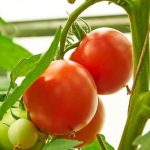Are you eager to start your own vegetable garden in Arizona? This Arizona Vegetable Gardening Guide will provide you with the essential information and tips to help you successfully grow a bountiful and thriving garden in the unique climate and soil conditions of the Grand Canyon State. Whether you are a novice or experienced gardener, this guide will equip you with the knowledge and tools needed for a successful vegetable gardening experience in Arizona.
Arizona’s diverse climate and terrain create a unique set of challenges and opportunities for vegetable gardening. From the high desert regions to the low desert areas, each location presents its own set of considerations for growing vegetables.
The key to successful gardening lies in understanding these conditions and adapting your techniques accordingly. In this guide, we will explore the best vegetables to grow in Arizona, as well as essential tips for maintaining a healthy vegetable garden despite the harsh heat and limited water availability.
In addition to discussing the specific challenges of Arizona’s climate, we will also delve into the unique soil and water conditions that impact vegetable gardening in the state. Understanding these factors is crucial for selecting the right plants, improving soil quality, and implementing water-wise strategies that are essential for sustainable gardening practices in Arizona.
Whether you have just moved to Arizona or have been living here for years, this guide will help you navigate through these challenges and lay the groundwork for a successful vegetable garden.
The Best Vegetables to Grow in Arizona’s Climate
When it comes to choosing which vegetables to grow in Arizona’s climate, it’s important to select varieties that can withstand the extreme heat and limited water conditions that are common in the state. Here are some of the best vegetables to consider planting in your Arizona vegetable garden:
- Tomatoes: Tomatoes thrive in Arizona’s hot, dry climate and can be grown successfully throughout the state. Look for heat-tolerant varieties such as Roma or Sun Gold.
- Peppers: Hot and sweet peppers, such as jalapeños, bell peppers, and banana peppers, are well suited to Arizona’s climate. They require full sun and good drainage.
- Cucumbers: Cucumbers are a great choice for Arizona gardens, especially if you have a trellis or another support structure for them to climb. Varieties like Straight Eight and Diva perform well in the desert heat.
In addition to these options, other vegetables that typically do well in Arizona include eggplant, squash, melons, and various herbs like basil and oregano. It’s important to choose varieties that are labeled as heat-tolerant or suited for warm climates when selecting seeds or seedlings for your garden.
By focusing on growing vegetables that are well adapted to Arizona’s unique climate and soil conditions, you can increase your chances of having a successful harvest. When planning your Arizona vegetable garden, consider incorporating some of these recommended vegetables into your planting scheme. With careful attention to moisture levels and proper care, you can enjoy a bountiful harvest of fresh produce from your own backyard oasis.
Understanding Arizona’s Unique Soil and Water Conditions
Arizona’s unique soil and water conditions pose both challenges and opportunities for vegetable gardeners. Understanding the specific characteristics of Arizona’s soil and the scarcity of water in this desert climate is essential for successful gardening.
Soil Characteristics
Arizona’s soil is known for its high alkalinity and low organic matter content, making it challenging to grow certain vegetables. However, with proper soil amendments and pH balancing, it is possible to create a fertile environment for a thriving garden.
Water Scarcity
One of the biggest challenges for vegetable gardeners in Arizona is the scarcity of water. With low annual rainfall and limited access to irrigation water, it is crucial to implement water-efficient gardening practices such as drip irrigation, mulching, and choosing drought-tolerant vegetable varieties.
Adapting Garden Practices
In order to successfully navigate Arizona’s unique soil and water conditions, gardeners must adapt their practices accordingly. This may include using raised beds or container gardening to ensure proper drainage and moisture retention, as well as utilizing compost and organic matter to improve soil quality.
By understanding and adapting to Arizona’s unique soil and water conditions, vegetable gardeners can cultivate a bountiful harvest despite the challenges posed by this arid climate. Utilizing the tips and techniques specific to Arizona vegetable gardening outlined above will help gardeners make the most out of their experience.
Essential Tools and Equipment for Arizona Vegetable Gardeners
When it comes to Arizona vegetable gardening, having the right tools and equipment can make all the difference in the success of your garden. Because of Arizona’s unique climate, soil, and water conditions, it’s important to have the proper tools to help you effectively maintain your vegetable garden.
One essential tool for Arizona vegetable gardeners is a drip irrigation system. With the intense heat and limited rainfall in Arizona, it’s crucial to have an efficient way to water your vegetable garden. A drip irrigation system allows you to deliver water directly to the base of your plants, minimizing evaporation and ensuring that each plant receives the right amount of water.
Another important piece of equipment for Arizona vegetable gardening is a shade cloth. The scorching temperatures in Arizona can be tough on delicate vegetables, so providing some relief from the sun is essential. A shade cloth can be used to protect your plants from excessive heat and sun exposure, helping them thrive in Arizona’s challenging climate.
Lastly, a good quality mulch is a must-have for Arizona vegetable gardeners. Mulch helps conserve moisture in the soil and regulate soil temperature, which is especially important in the desert environment of Arizona. Using mulch can also help suppress weeds and reduce the need for watering, making it an invaluable tool for maintaining a healthy vegetable garden in Arizona.
| Essential Tools | Benefits |
|---|---|
| Drip irrigation system | Efficient watering in arid climate |
| Shade cloth | Protection from intense heat |
| Mulch | Moisture conservation and weed suppression |
Tips for Success
Maintaining a healthy vegetable garden in Arizona can be a challenging but rewarding endeavor. With the intense heat and low humidity, it’s important to take the right steps to ensure your plants thrive in this unique environment. Here are some essential tips for success when it comes to maintaining a healthy Arizona vegetable garden.
First and foremost, irrigation is crucial for the success of your garden in Arizona. With the arid climate, regular watering is essential, especially during the hot summer months. Drip irrigation systems are highly recommended as they deliver water directly to the roots of plants, reducing water waste and minimizing evaporation. Investing in a timer for your irrigation system can also ensure that your plants receive consistent and adequate moisture.
In addition to proper watering, providing shade for your plants can help protect them from the scorching sun. Consider using shade cloth or planting taller crops on the west side of your garden to provide relief from the intense afternoon heat. Mulching is another important practice in Arizona vegetable gardening, as it helps retain soil moisture, reduce evaporation, and suppress weed growth. Organic mulches such as straw or bark are ideal for maintaining soil moisture and keeping temperatures more stable.
Finally, it’s crucial to stay on top of soil nutrition and fertility when gardening in Arizona. The region’s unique soil conditions may require amendments such as organic matter, compost, and slow-release fertilizers to ensure that your plants are getting the nutrients they need to thrive.
Conducting regular soil tests can help you determine which nutrients are lacking and guide you in making informed decisions about fertilization. By staying proactive with soil management practices, you can maintain a healthy and productive vegetable garden in Arizona.
Dealing With Common Pests and Diseases in Arizona Vegetable Gardens
Identifying Common Pests
Arizona’s dry climate can create ideal conditions for certain pests to thrive. Some common pests that Arizona vegetable gardeners may encounter include aphids, whiteflies, spider mites, and leafminers. These pests can cause damage to plants by sucking out their juices or feeding on their leaves. It’s important to regularly inspect your vegetable garden for signs of pest infestations so that you can take action before the problem becomes severe.
Preventing and Managing Pest Infestations
One effective method for preventing pest infestations in an Arizona vegetable garden is to practice good garden hygiene. This includes removing any plant debris, such as fallen leaves or overripe fruits, which could attract pests.
Additionally, using row covers or insect netting can help protect your plants from unwanted visitors. If you do notice a pest problem in your garden, consider using natural pest control methods such as introducing beneficial insects like ladybugs or lacewings to help keep pest populations in check.
Identifying Common Diseases
Arizona’s warm and dry climate also creates conditions that are conducive to certain plant diseases. Common diseases that Arizona vegetable gardeners may encounter include powdery mildew, blossom end rot, and various fungal infections. To prevent the spread of disease in your vegetable garden, it’s important to provide adequate air circulation around your plants and avoid overhead watering, which can create moist conditions that are favorable for disease development.
By being proactive about identifying and addressing common pests and diseases in your Arizona vegetable garden, you can ensure that your plants thrive and produce a bountiful harvest. Incorporating these tips into your gardening routine will help you maintain a healthy and thriving vegetable garden throughout the growing season.
Harvesting and Preserving Your Arizona Vegetable Garden Bounty
When it comes to harvesting and preserving the fruits of your labor in your Arizona vegetable garden, timing is everything. Understanding when to harvest your vegetables at their peak ripeness will ensure that you enjoy the best flavor and nutritional value from your home-grown produce. Here are some tips for harvesting and preserving your Arizona vegetable garden bounty:
- Harvesting: Learn the optimal time to harvest each type of vegetable, as this can vary depending on the variety and the specific growing conditions in Arizona. For example, tomatoes should be harvested when they are fully colored but still firm, while squash should be picked when they are small and tender.
- Preserving: The hot and dry climate of Arizona presents unique challenges for preserving vegetables. Consider methods such as canning, dehydrating, or pickling to extend the shelf life of your produce. Canning salsa or pickled vegetables can be a great way to enjoy your harvest throughout the year.
- Storing: Proper storage is essential for preserving the quality of your harvested vegetables. Be sure to store them in a cool, dry place away from direct sunlight. Investing in a good quality vacuum sealer can also help prolong the freshness of your produce.
In addition to preserving your harvest through traditional methods, you may also want to consider saving seeds from your best-performing plants for future seasons. By selecting seeds from healthy and productive plants, you can gradually develop varieties that are well-adapted to Arizona’s unique climate and growing conditions.
Overall, harvesting and preserving the bounty of your Arizona vegetable garden can be a rewarding experience. With proper timing and techniques, you can enjoy the flavors of your home-grown produce throughout the year.
Resources for Arizona Vegetable Gardeners
In conclusion, the Arizona Vegetable Gardening Guide provides a comprehensive overview of everything a gardener needs to know to successfully cultivate their own produce in the unique climate and conditions of Arizona. From understanding the top vegetables that thrive in this environment to learning about the specific soil and water considerations, this guide offers valuable insights for both beginners and experienced gardeners.
With the right tools and equipment, Arizona vegetable gardeners can set themselves up for success, while also staying informed about maintaining a healthy garden and managing common pests and diseases. Harvesting and preserving the bounty from an Arizona vegetable garden is not only rewarding but also allows gardeners to enjoy their homegrown produce for months to come.
Additionally, local nurseries, gardening clubs, and events provide invaluable resources for Arizona vegetable gardeners looking to connect with like-minded individuals, access high-quality plants and seeds, and gain knowledge from experienced professionals. By utilizing these resources in conjunction with the tips and recommendations from this guide, Arizona vegetable gardeners can look forward to bountiful harvests that will nourish themselves and their families throughout the year.
Whether you are a beginner or seasoned gardener, this guide serves as an indispensable tool for anyone looking to create a thriving vegetable garden in Arizona.
Frequently Asked Questions
What Vegetables Are Best to Grow in Arizona?
In Arizona, the best vegetables to grow are those that can withstand the dry, hot climate. Some great options include tomatoes, peppers, cucumbers, zucchini, and various types of squash. These vegetables are well-suited to the intense heat and sunlight of the region.
When Should I Start a Vegetable Garden in Arizona?
The ideal time to start a vegetable garden in Arizona is in late winter or early spring. This allows for the cooler temperatures and ample sunshine to help the plants establish themselves before the scorching summer heat sets in. It’s important to plan around Arizona’s unique climate and growing seasons.
Can You Grow Vegetables Year Round in Arizona?
Yes, it is possible to grow vegetables year-round in Arizona, thanks to its mild winters in many parts of the state. With careful planning and the use of season extenders like row covers or greenhouses, it’s possible to continue growing certain vegetables even during the winter months.
However, it’s important to be mindful of each vegetable’s specific needs and adjust accordingly based on seasonal changes.

If you’re looking to get into vegetable gardening, or are just looking for some tips on how to make your current garden better, then you’ve come to the right place! My name is Ethel and I have been gardening for years. In this blog, I’m going to share with you some of my best tips on how to create a successful vegetable garden.





